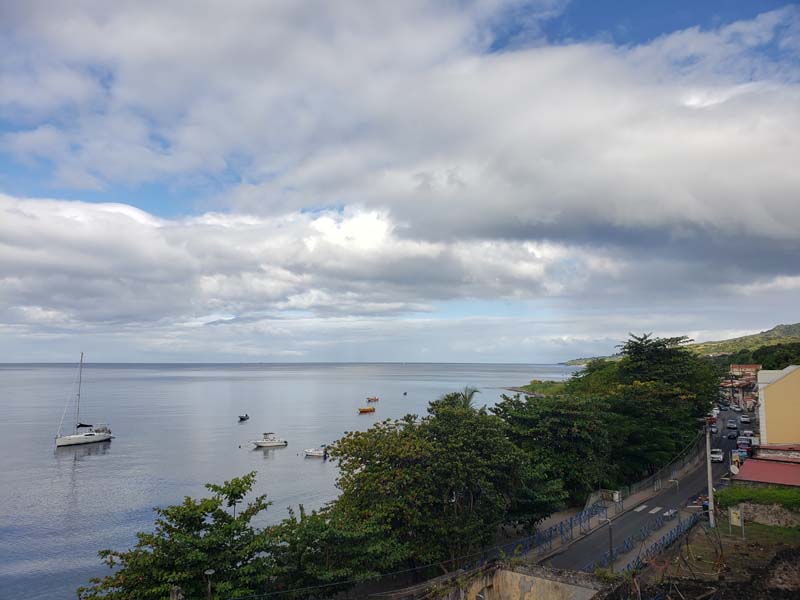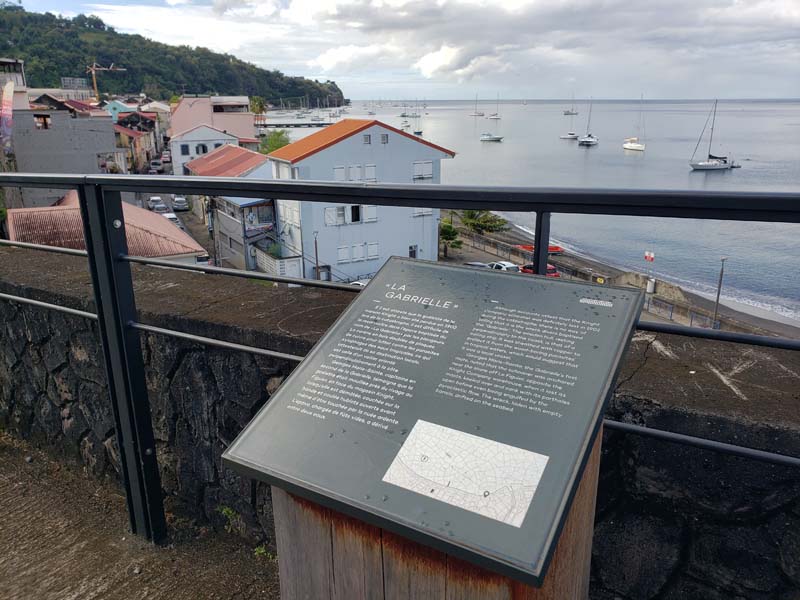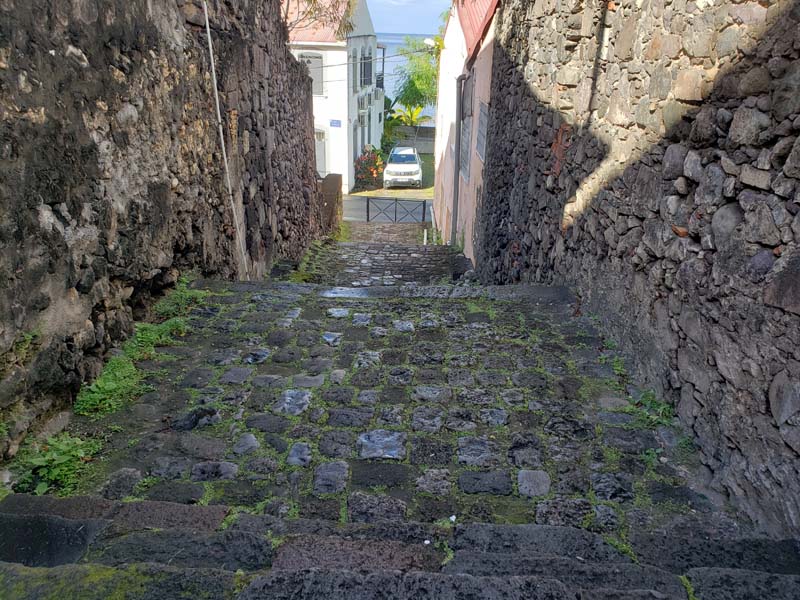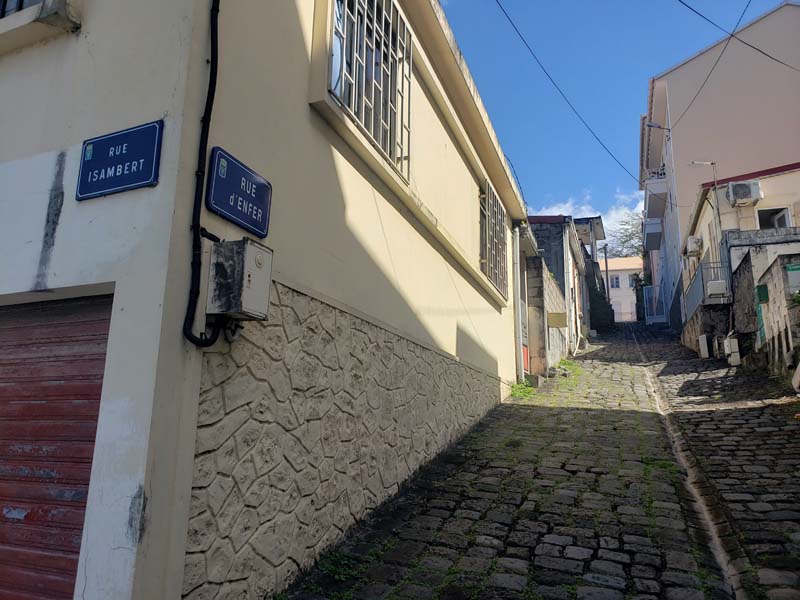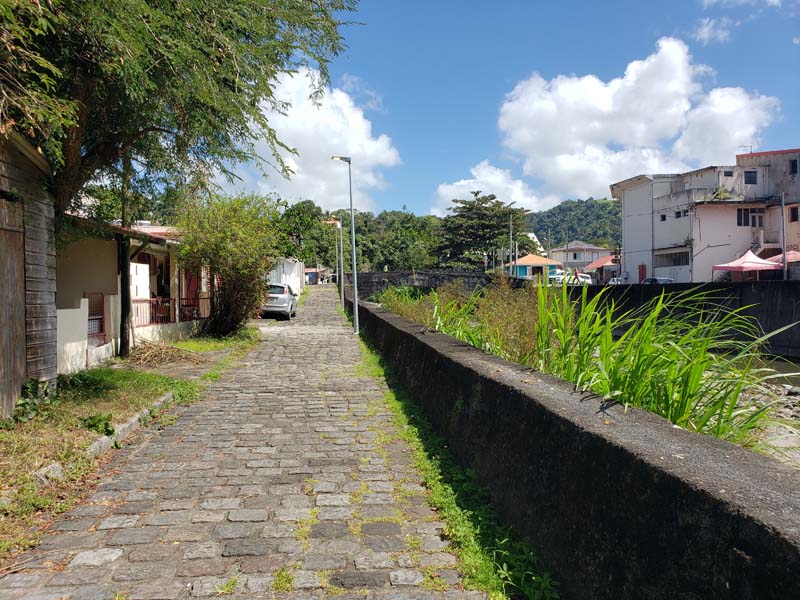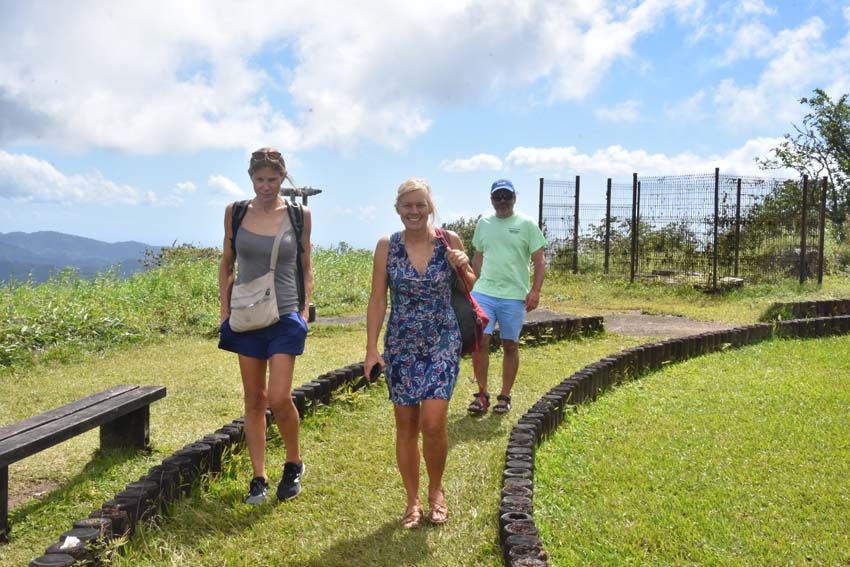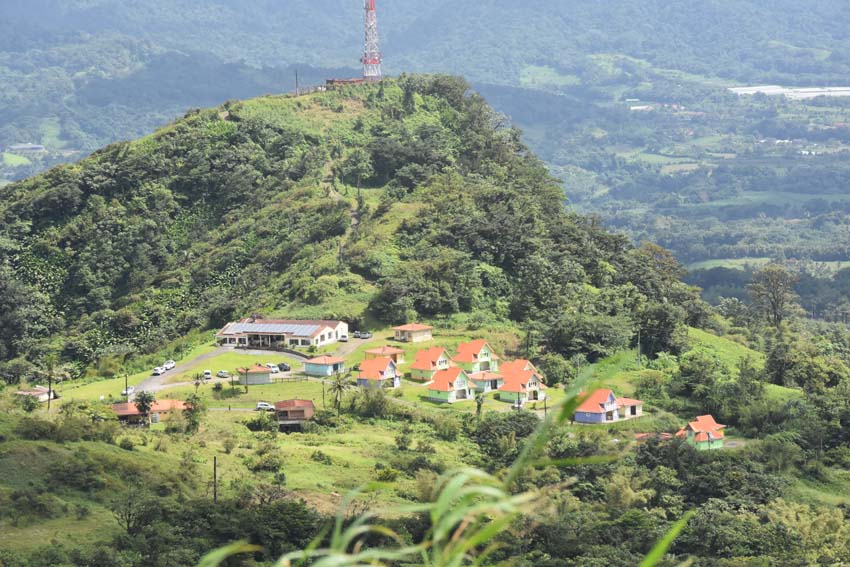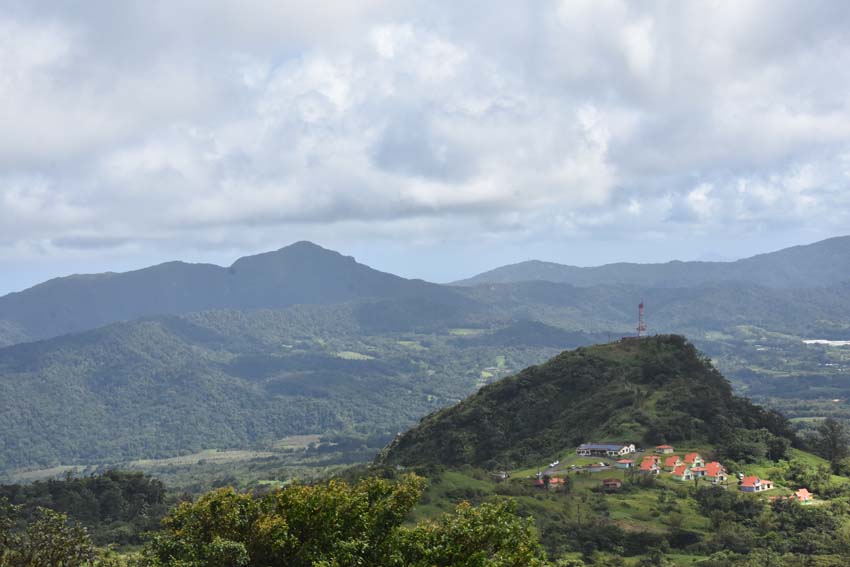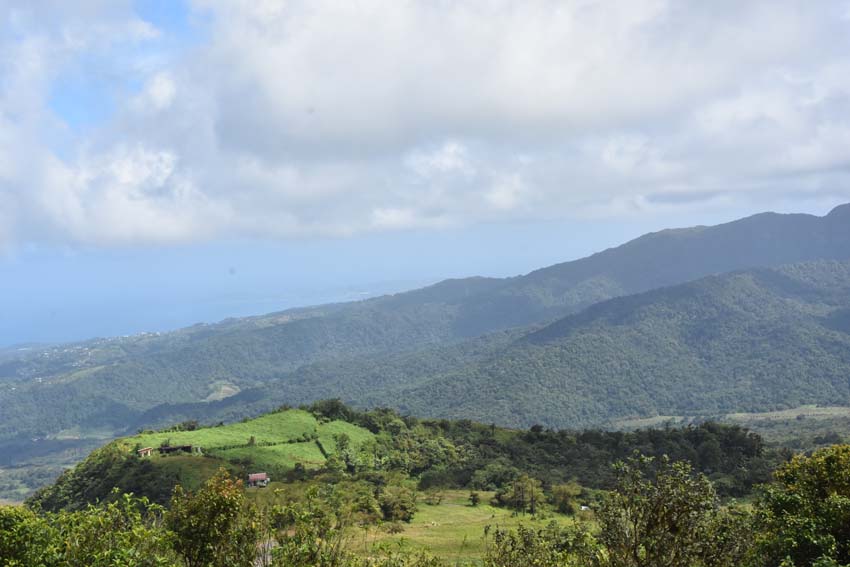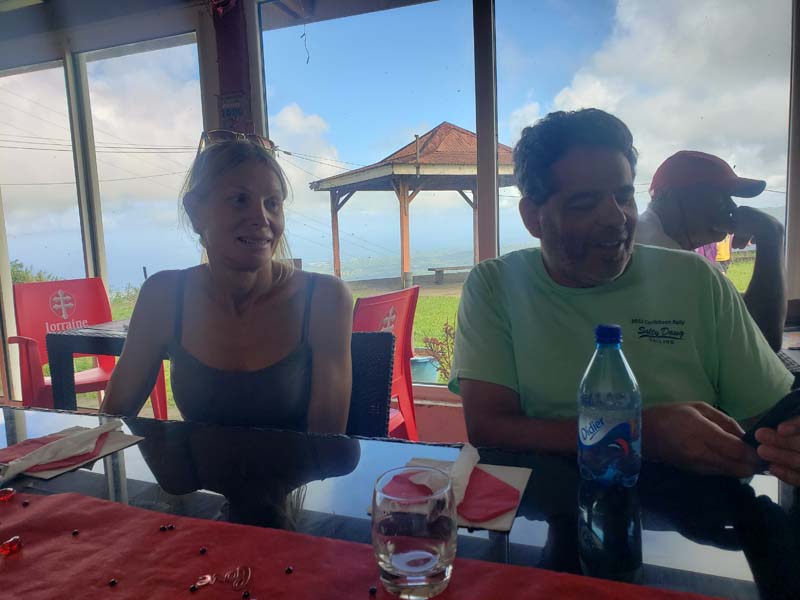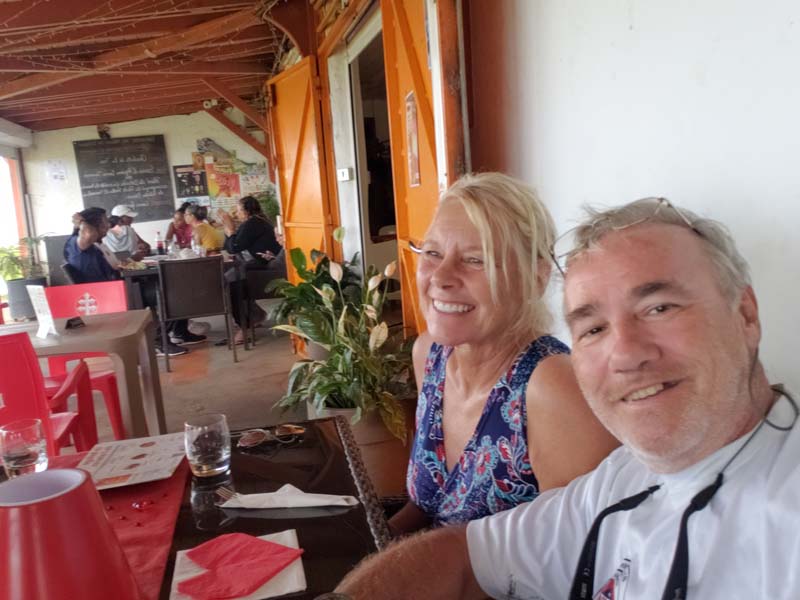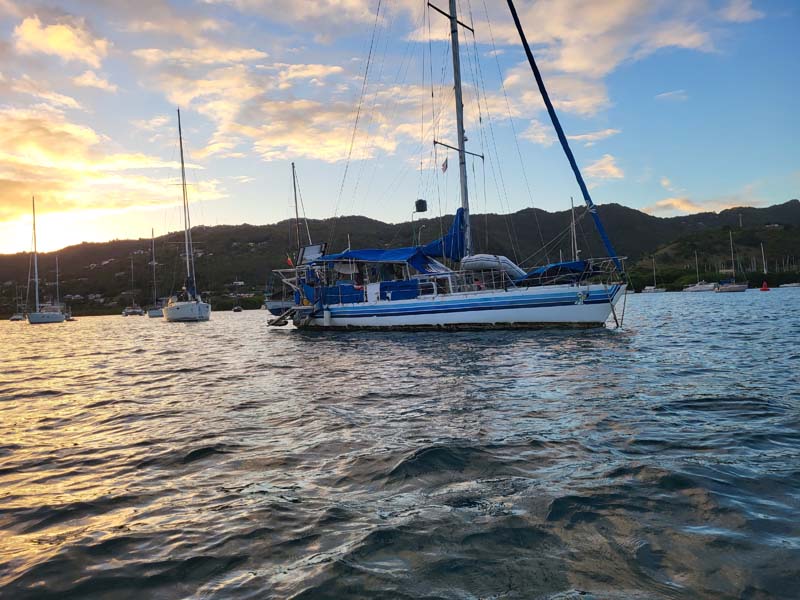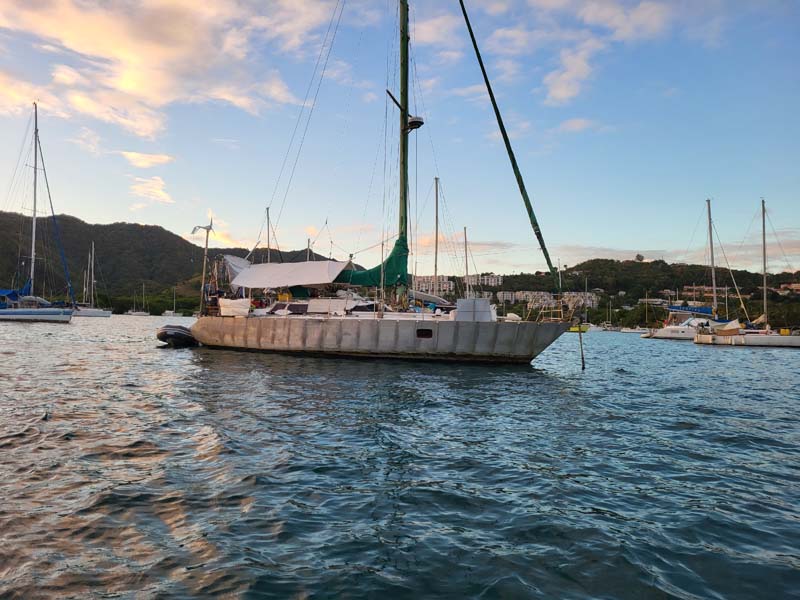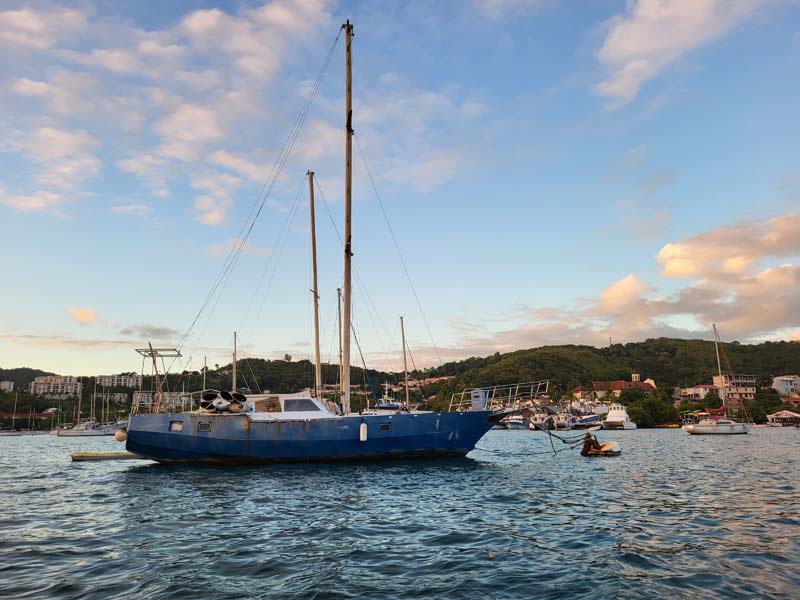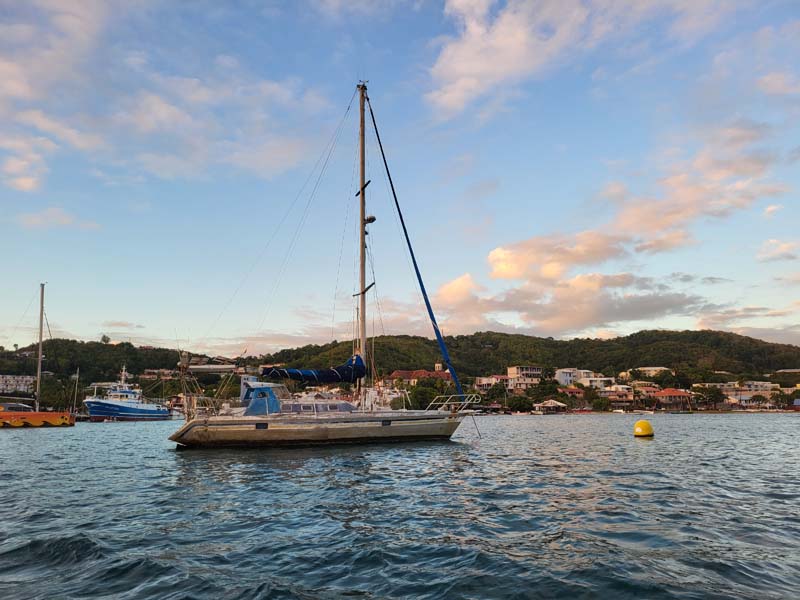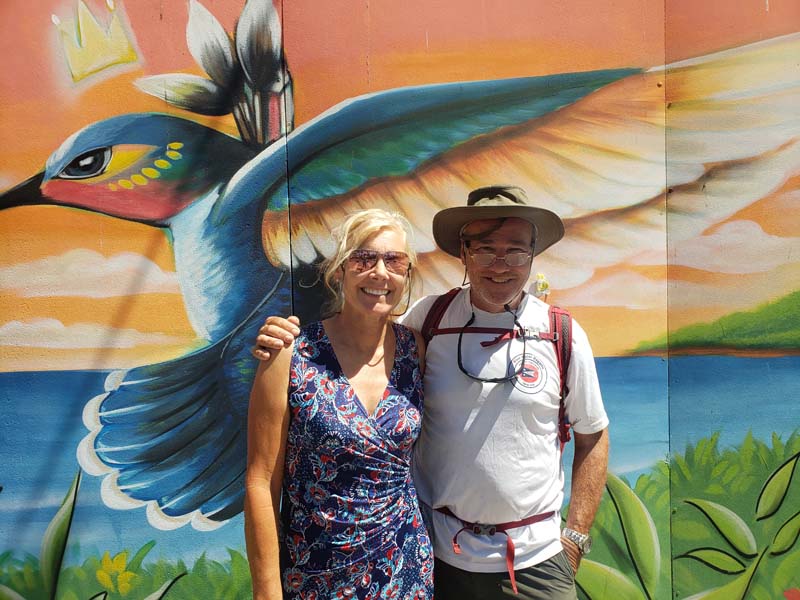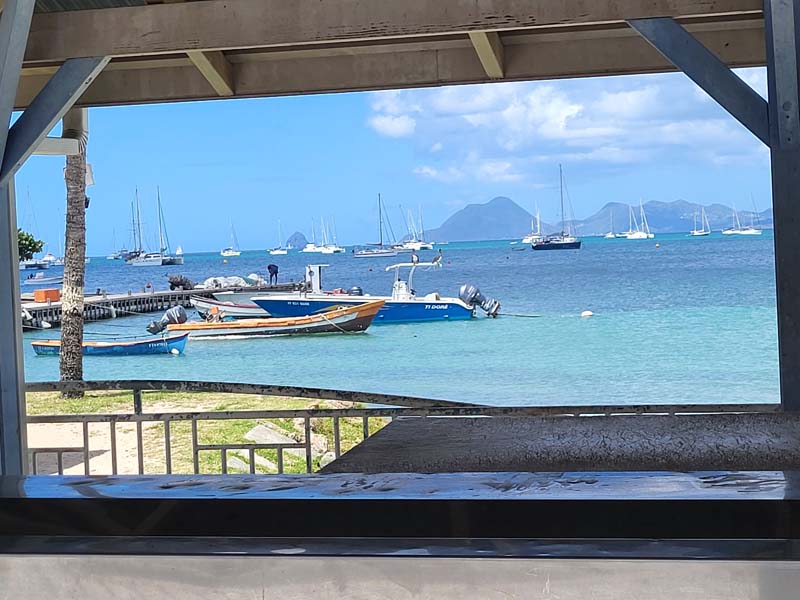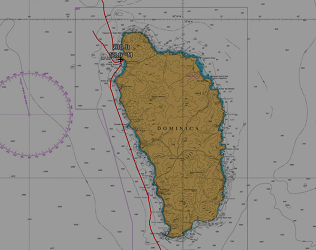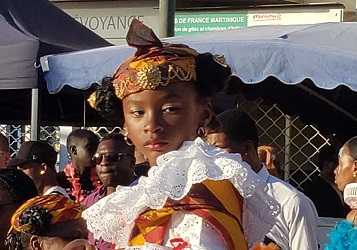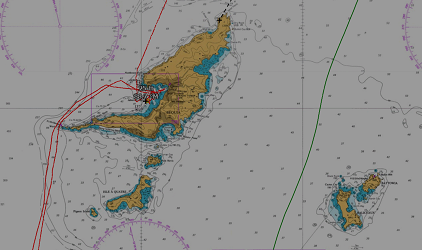
MARTINIQUE
Saint Pierre
Saint Pierre has become a charming town on the northwest side of Martinique. Protected by Pelee, the volcano, it gets little wind.It does however get swells at times and makes for a rolly anchorage.
The scale of swell roll on a boat was coiled by Kaloona Moo's Bi Woodroffe; Level 1: 2 degrees, calm as a lake. Level 2: 4 degrees, noticeable. Level 3: 8 degrees, good for sleepng. Level 4: 12 degrees, watch your drinks. Level 5 Plan to move. Level 6: GTFO now.Level 7: should not have anchored in the first place.

Our stop in St Pierre started as level 2.5, and ended at level 6. A lot of it is the lack of wind causing you to swing in weird ways.
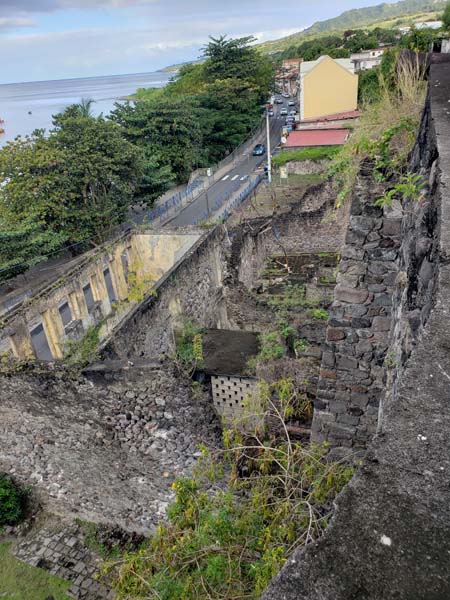
When the swell matches the roll resonnance frequency of your boat sideways you are done. THis depends on swell, wind, and the actual boat.
The town of St Pierre is known, sadly, for its total destruction May 08, 1902, as the volcano erupted and a pyroclastic flow of mud, superhot gas, and eruptive fallout engulfed the town and the lives of people very much similarly to what Vesuvius did to Pompeii. There were three survivors in town, the other 30,000 died, including some on the ships at anchor.
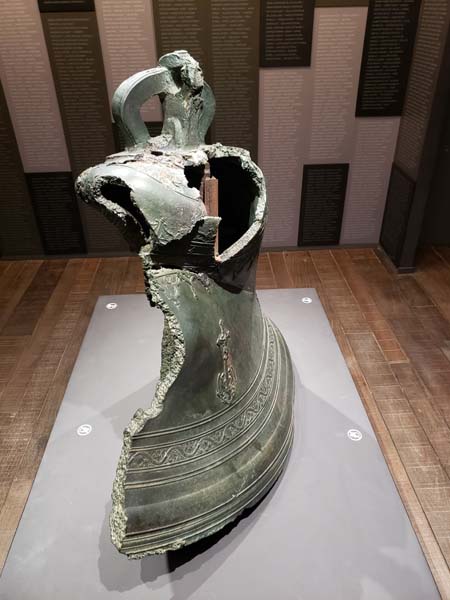
The science was not trusted at the time, and while there had been mud flows and some ptoblems a few days prior, no one wanted to believe that disrupting the economy and evacuating was convenient, nor good for the elections that were taking place. Of course we saw some of this behavior from governments in the recent world pandemic, so it is no surprise. The survivors are the ones who left town for the hills, and refused to listen to the leaders. The church did nothing to protect the people,its bell detroyed. The jail however held one of survivors of the disaster. He had been arrested for murder, oddly he survived and his victim would have actually died two days later, fate has its ways to confuse us.
Some ships survived; one was 8 miles away and had minor damage.The Caribbean Library gives an idea of the devastation and lives lost on the event, and the Frank Perret museum in town is well worth a visit to understand the events, poitically, geologically, and culturally. Frank Perret Museum. There is a Wikipedia article which may interest the reader.
In St Pierre you will find everything from food to barbers to cell phone repair and liquor shops. The town is pleasant to visit, and we had no concerns about any issues, other than the tight anchorage. Because there is a memorial anchorage in the bay with the twenty or so ships that sank or burned to ashes instantly with all aboard, the only anchoring is between the beach and the memorial, or to the south of the memorial on a sloping shore. Too close and you get bad swell, too far and you need a lot of scope. If you have lots of chain that is not an issue.
The tourim office is very accomodating. I give them a tip to thank them for their help. They also will call a taxi for you, or suggest destinations.
Volcano
In 2023 We took a cab to the volcano, but did not have the chance to hike the top. It is a long, but not particularly difficult hike, but on most days the volcano is in the clouds and the views that normally reward the hiker for their work are absent. So we stayed in the base shelters and enjoyed the views of the island from one of the best spots.
Rocher du Diamant
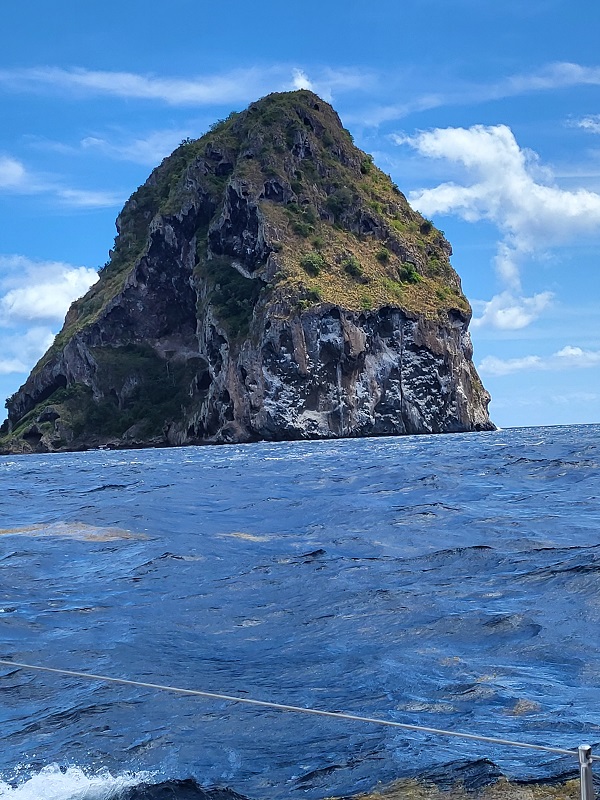
Diamond Rock or Rocher du Diamant is hard to miss. It is so distinct in shape from other features in the coast that it attracts tour boats. In addition, the steep slopes attract fish. Watch for current and for winds the die, best to have an engine in shape or leave it with ample clearance. Most people cut the corner inside to reach Le Marin from the North.
We wondered what caused these caves in the rock, was it erosion, or what? Apparently there were inclusions of volcanic rock in a briddle volcanic uplift and the rocks fell to the bottom, leaving the large caverns in Diamond Rock . These cavers were used by british soldiers to sleep in when it was once named HMS Diamond Rock. The british forces build fortifications there to interdict passage between Martinique and the Rock itself, helping protect St Lucia Channel. It was not unusual to fortify islands in these days and there are many examples of this in the Caribbean. The strategic location comes from the dominant winds. It's an upwind chore to get east from the corner and hugging the shore is a good strategy. The guns on HMS DIamond Rock were high and close. As it turns out, the garrison would get water from Martinique, salt beef from Barrels, and green vegetables from the rock in the form of Kalalloo that grows there abundently. Eventually Napoleon's armies managed to kick the british out by creating a blocade preventing water and other supplies from reaching the rock ship..
Le Marin
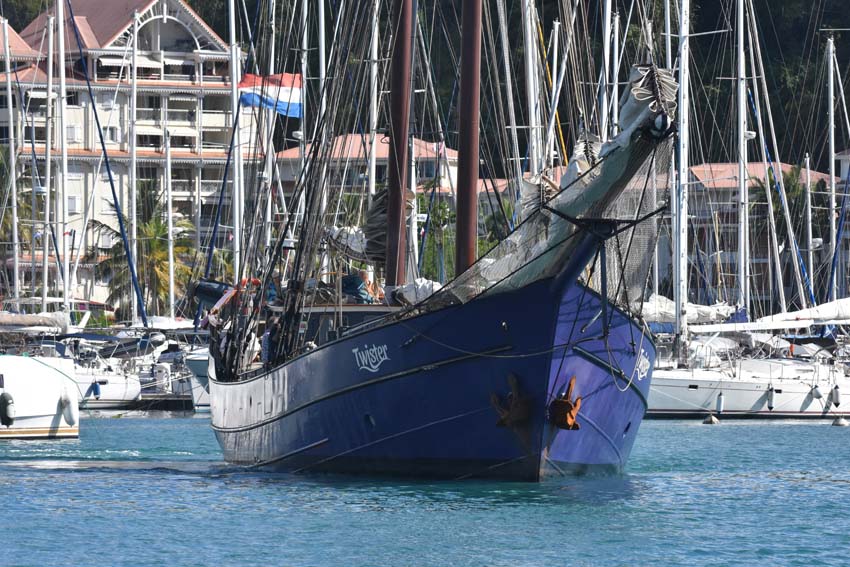
South of St Marteen where you can get work done and purchase supplies, Le Marin has pretty extensive infrastructure and shops. People who kept their boats there described various levels of eggregiousness in some of the shops, so it pays to do some homework. ONe friend had nothing but praise for the independent mechanic working on his boat. Le Marin is a good place to rest at a mooring, and the field has an abundance of them.
For provisions, I can recommend Carrefour next to Carenantilles, may be Auchan, but not so much Leader Price where price is better but the quality is not there for all goods carrier. There is dive gear, electrical, chandlery items, and diesel maintenance work. I actually purchased anchor chain there, and it was much cheaper, for G43 Lofrans brand, than any brand HT chain in the US. Also not a bad place to get fuel, just be aware that the fuel docks are very busy on some days with charter boats returning. The dock hands are experienced and efficient.
The mooring field is very large, and there are a couple of anchorages nearby. St Anne has a lot of capacity to accomodate yachts, and the distance to the beach can be quite long. The hosing gound is good. Off Carenantilles there is a derelict anchorage, and aliveaboard anchorage. One wonders how the boats turn from someone's dream of exotic destinations, to a glorified barnacle encrusted RV used as a crash pad apartment and, be assured, without any sanitation treatment. I attached some pictures for fun.

T'it Punch anyone?
Near
SAINTE ANNE
Sainte Anne has one of the largest anchorages in the country, with anchoring from near the shore to almost three quarters of a mile in modest depths with good holding ground. The boats are spread out throughout the bay and finding an proper place to drop the hook is relatively easy, simply needing to avoid a few rocky or seagrass bottoms.
There is a landing jetty for the dinghy, best to have a stern anchor on the dinghy. The local town mayor and counsel in 2023 took the initiative to send the town maintenance employees to grind off all the tie up rings so dinghies would nt be able to dock. Clearly, the community of middle class St Anne folks were not keen on cruisers coming to town.
While the shop owners enjoy the presence of cruisers, there are upheavals in the town about anchoring off the bay. Sewage from the heads is one quoted reason, environmental preservation is another. We all know that this is really driven by economic reasons. One theory I have is that the charter companies have rental bungalows built on pontoon boats, and that permanently mooring these in the bay means revenue, the other theory is what has happened in many harbors in the Mediterranean where protection of the sea grass beds is deemed more important than anchoring which admittedly damages the seabed. THe last theory offered is that people simply don't like cruisers. Many cruisers are not spending money in town, and many have derelict boats that one would never think to take to sea. Aggravating the problem is the fact that some sailors put their dinghies on private docks and verbally abuse the owners when chased away. Locals also cite security as a reason, which is all ridiculous, there is no reason for the town to know who is at anchor. Much of this is driven by "grass roots", and as we know in this world, there are rarely any grass roots movements, instead, well meaning people agitated by special interests.
Le Calvaire
Located in Sainte Anne, above the church, the Calvaire is a theme found everywhere in France in small villages in the South. As its name suggests, it is the path to the cross, and many churches have created a path with various structures to allow the pious to reflect. We are not religious, but the beauty of churches and their symbol of community, as well as the effort put into them over centuries, combined with architecture that is sometimes stunning even in small villages in France, makes a visit pleasant. One of the more famous Calvaires is in Megeve, France, in Savoie, called bysome the Jerusalem of Savoie. So we went to the Calvaire and took pictures of the 13 monuments with hau relief in plaster or carved stone. The building symbolizing the tomb at the top had a provintial country innocence and charm, the parish having interpreted the scene in their best possible way with their limited resources. It's the only tomb I ever say with extruded aluminum doors. Nevertheless, bot the church and the path are recommended if you are a curious person.
The Church in Sainte Anne
We never enter a town with a church without checking it out. The architecture, sometimes the sculptures, are stunning. While St Anne is not Paris, the stone building with a wood beam upper structure are quaintly charming.
